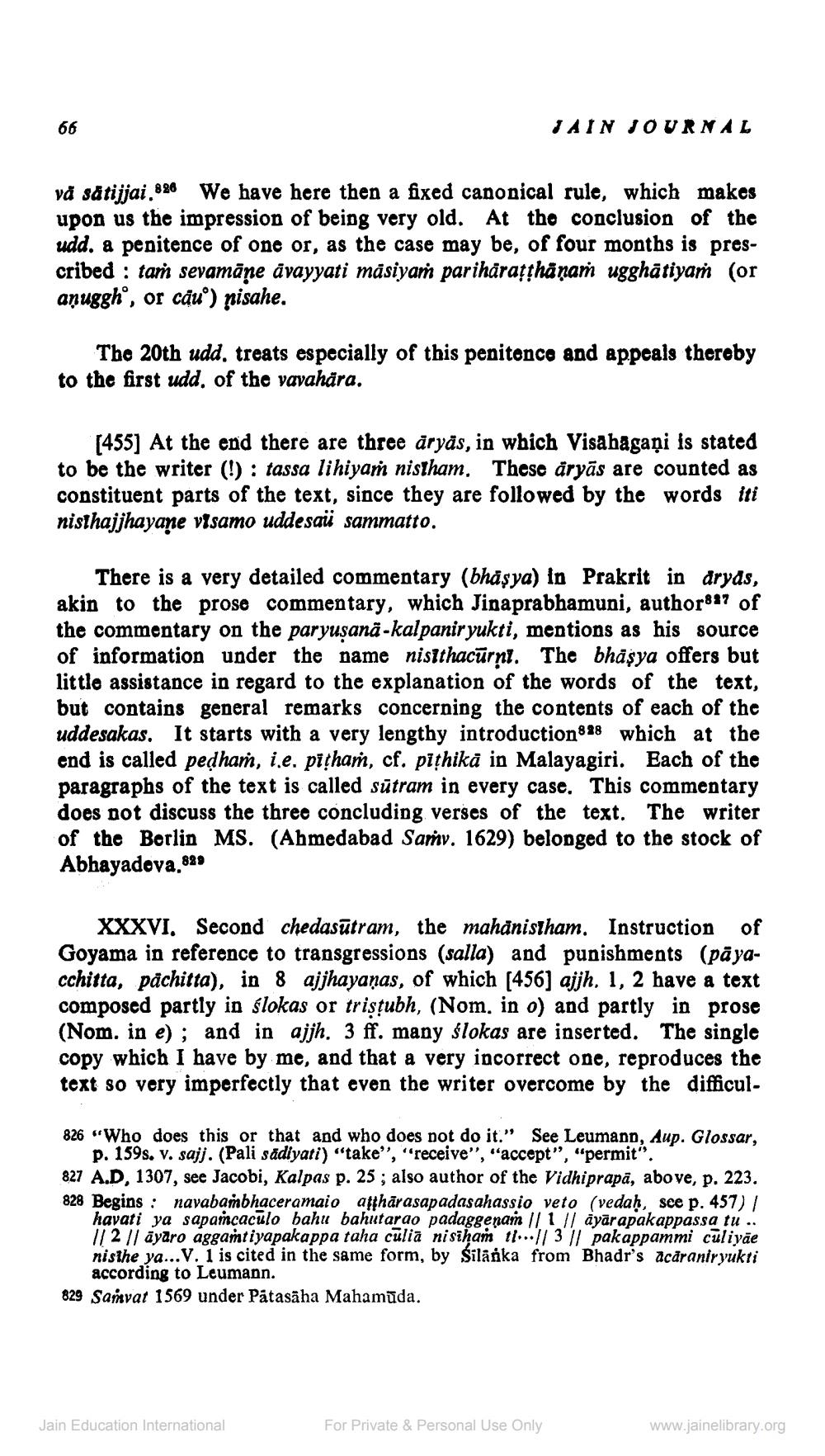________________
66
MAIN JOURNAL
vå sätiijai.888 We have here then a fixed canonical rule, which makes upon us the impression of being very old. At the conclusion of the udd. a penitence of one or, as the case may be, of four months is prescribed : tam sevamane avayyati masiyaṁ pariharațrhänaṁ ugghātiyar (or aņuggh", or cậu°) pisahe.
The 20th udd. treats especially of this penitence and appeals thereby to the first udd, of the vavahära.
[455] At the end there are three aryas, in which Visahagaņi is stated to be the writer (!) : tassa lihiyam nistham. These äryās are counted as constituent parts of the text, since they are followed by the words iti nisihajjhayane visamo uddesaü sammatto.
There is a very detailed commentary (bhäşya) in Prakrit in dryds, akin to the prose commentary, which Jinaprabhamuni, author817 of the commentary on the paryuşanā -kalpaniryukti, mentions as his source of information under the name nisithacūrni. The bhäsya offers but little assistance in regard to the explanation of the words of the text, but contains general remarks concerning the contents of each of the uddesakas. It starts with a very lengthy introduction 828 which at the end is called pedham, i.e. pitham, cf. pishika in Malayagiri. Each of the paragraphs of the text is called sūtram in every case. This commentary does not discuss the three concluding verses of the text. The writer of the Berlin MS. (Ahmedabad Sarv. 1629) belonged to the stock of Abhayadova.829
XXXVI. Second chedasūtram, the mahānistham. Instruction of Goyama in reference to transgressions (salla) and punishments (pāyacchitta, păchitta), in 8 ajjhayaņas, of which (456) ajjh. 1, 2 have a text composed partly in ślokas or trisțubh, (Nom, in o) and partly in prose (Nom. in e); and in ajjh. 3 ff. many ślokas are inserted. The single copy which I have by me, and that a very incorrect one, reproduces the text so very imperfectly that even the writer overcome by the difficul.
826 “Who does this or that and who does not do it." See Leumann, Aup. Glossar,
p. 159s. V. sajj. (Pali sådiyati) "take", "receive", "accept", "permit". 827 A.D, 1307, see Jacobi, Kalpas p. 25; also author of the Vidhiprapā, above, p. 223. 828 Begins : navabambhaceramaio aftharasapadasahassio veto (vedah, see p. 457) /
havati ya sapancaculo bahu bahutarao padaggenam // 1 // ayārapakappassa tu .. // 2 // āyaro aggantiyapakappa taha culia nisihan th... // 3 // pakappammi culiyae nisthe ya...V. 1 is cited in the same form, by Silanka from Bhadr's acăranir yukti
according to Leumann. 829 Sanvat 1569 under Pätasaha Mahamuda.
Jain Education International
For Private & Personal Use Only
www.jainelibrary.org




